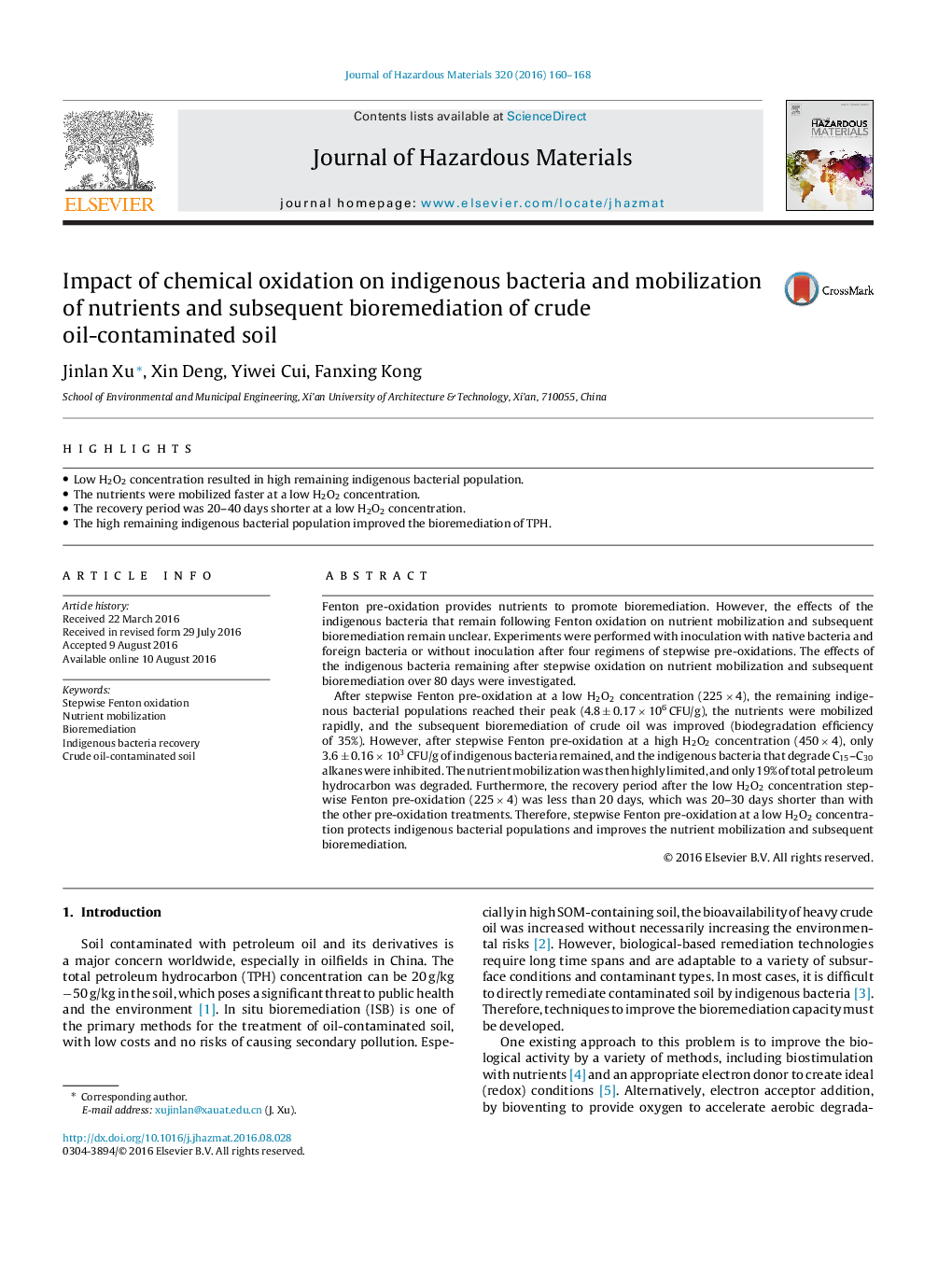| Article ID | Journal | Published Year | Pages | File Type |
|---|---|---|---|---|
| 575211 | Journal of Hazardous Materials | 2016 | 9 Pages |
Abstract
After stepwise Fenton pre-oxidation at a low H2O2 concentration (225 Ã 4), the remaining indigenous bacterial populations reached their peak (4.8 ± 0.17 Ã 106 CFU/g), the nutrients were mobilized rapidly, and the subsequent bioremediation of crude oil was improved (biodegradation efficiency of 35%). However, after stepwise Fenton pre-oxidation at a high H2O2 concentration (450 Ã 4), only 3.6 ± 0.16 Ã 103 CFU/g of indigenous bacteria remained, and the indigenous bacteria that degrade C15-C30 alkanes were inhibited. The nutrient mobilization was then highly limited, and only 19% of total petroleum hydrocarbon was degraded. Furthermore, the recovery period after the low H2O2 concentration stepwise Fenton pre-oxidation (225 Ã 4) was less than 20 days, which was 20-30 days shorter than with the other pre-oxidation treatments. Therefore, stepwise Fenton pre-oxidation at a low H2O2 concentration protects indigenous bacterial populations and improves the nutrient mobilization and subsequent bioremediation.
Keywords
Related Topics
Physical Sciences and Engineering
Chemical Engineering
Chemical Health and Safety
Authors
Jinlan Xu, Xin Deng, Yiwei Cui, Fanxing Kong,
